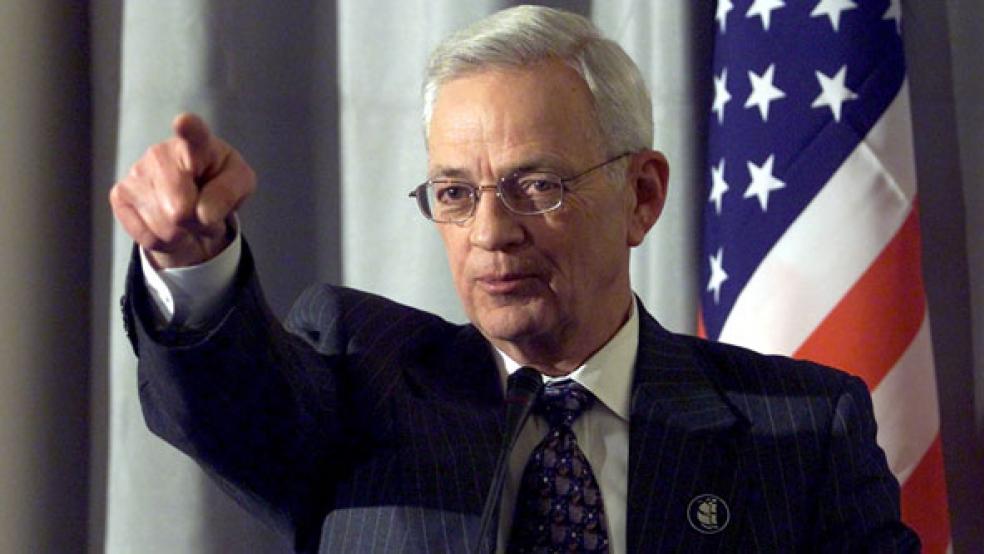What’s so great about good corporate habits? Doesn’t a company’s success or failure depend on its ability to produce, market and sell its products or services, coupled with sound management and investment strategies that keep it poised for even greater success? What’s “habit” got to do with any of this?
Judging by the thesis and examples contained in reporter Charles Duhigg’s new book, The Power of Habit: Why We Do What We Do in Life and Business, a company merely has to develop “keystone habits” – principles or routines that can set off chain reactions within organizations – and then get the whole tribe to follow them. And then, voila, success is pretty well assured.
RELATED: Walmart’s $2 Billion Plan to Win Back Shoppers
But take the case of Alcoa (AA) and Paul O’Neill back in 1987. Before he ever served as Treasury Secretary during the George W. Bush administration, O’Neill was a man on a mission. He needed to transform the abysmal safety record of the world’s largest aluminum company when he came aboard as CEO. The day he stepped foot inside the company, nearly every plant was reporting at least one worker accident a week.
Still, investors thought O’Neill would focus almost entirely on profits, efficiency and balance-sheet turnaround. And they were stunned when he chose, instead, the company’s safety record as a top priority. “Everyone deserves to leave work as safely as they arrive,” said O’Neill with conviction. Duhigg told The Fiscal Times, “O’Neill knew worker safety was a keystone habit – a habit that can set off a chain reaction. And by changing that, he could actually transform the company.”
O’Neill took about a year to implement a detailed series of measures. He installed tough new timetables for reporting employee accidents, and after soliciting input from the factory workers, he enforced better employee protection measures. As the plan began to sink in, employees learned that O’Neill meant business. “Alcoa’s safety patterns shifted and other aspects of the company changed as well,” says Duhigg. “Rules that unions had long opposed, such as measuring individual worker productivity, were embraced.” Alcoa was a top Dow Jones performer just a year later. “By the time O’Neill retired in 2000, the company’s annual net income was five times larger than before he arrived – its market cap had risen by $27 billion,” says Duhigg.
But what’s missing here is the meat – because Duhigg’s larger point is that good habits, especially when enforced from the top down, can actually help open up new and improved procedures and processes all the way down the line. Alcoa is one case study among many that Duhigg, a New York Times reporter, uses to illustrate how good habits, when thoughtfully put in place by business leaders, can “transform billion-dollar corporations” as well as change individuals’ lives. Excerpts from a conversation with Duhigg:
The Fiscal Times (TFT): You say that today Paul O’Neill is teaching hospitals how to focus on worker safety, in order to lower medical error rates. Why does Alcoa still resonate for you as an example of the “power” of good corporate habits?
Charles Duhigg (CD): It was so dramatic, particularly when people were initially dismissive that a focus on worker safety could accomplish anything. O’Neill figured his top priority would have to be something that everybody – the unions, the executives, the workers – could agree was important. He needed a focus to give him leverage to change how people worked. He told me, “You can’t order people to change. That’s not how the brain works. I decided if I could start disrupting the habits around one thing, it would spread throughout the company.”
TFT: So it was the disruption of old and outdated processes that were instrumental, too. Isn’t all of this just called “there’s a new guy at the top and he wants to do things differently”? Isn’t the “power of habits” catchphrase a little too simple?
CD: It’s much broader than that. The larger message is that CEOs have to take charge and establish cultures and routines for their companies – and not leave these things to chance. Organizational habits grow within every company, regardless of whether leaders want them to or not. So those at the top have to really think about the habits they want the company to follow, otherwise they’ll lose control over how the community within their corporation automatically behaves.
RELATED: 3 Cash-Free Ways to Motivate Employees
TFT: You write that Starbucks turned employee self-discipline into “an organizational habit” by establishing routines that those behind the counter can use in high-stress customer interactions. How so?
CD: The Starbucks example is one I really like. It shows that willpower can become routine. By choosing certain behaviors ahead of time, Starbucks employees know how to surmount what’s called “inflection points,” or difficulties they might encounter throughout their day in dealing with customers, equipment or other things. They practice those plans over and over. So the company’s entire business model is based on great customer service.
TFT: You say that during the King’s Cross subway fire in London in 1987, 31 people died because no individual worker or department took responsibility for passenger safety. Is this the flip side of your point, then – that bad “habits,” or lack of good habits, can wreck organizations and lead to crisis and tragedy?
CD: That’s actually a dramatic example of how dysfunctional habit can become incredibly dangerous, and how a crisis provides an organization the opportunity to transform. That’s why I included it – because it shows what can happen when there aren’t strong processes for responsibility in place. Unfortunately there was a tough lesson to learn in that case.
TFT: But what one company does may not be right for the next company – every entity is different and its needs different. You still feel there’s a broad takeaway, though.
CD: Here’s what it comes down to. Companies or organizations should not focus on trying to get every single thing right. Instead, they should choose priorities that set off chain reactions. When O’Neill said worker safety was the most important thing, he was also saying nothing mattered more at Alcoa than workers’ lives. That’s a huge cultural “statement.” You don’t have to think through every choice you make on a day-to-day basis. You already know because the culture tells you.
TFT: This thinking can also lead to the “science of small wins,” you say. Is this another clever catchphrase?
CD: Clear habits offer regular opportunities for victory. There’s momentum as well as room for experimentation. Most companies need serendipity to have breakthroughs.
TFT: How can CEOs or top leaders initiate all of this when they first start companies?
CD: The point is to think very deliberately about habits. Here’s a small business example: A friend of mine started a Silicon Valley company, and every Thursday night he began buying pizza for the team. It’s now part of their culture, and it leads to much bigger “wins.” Every Thursday he tells them, “Guys, it’s been a long week. Tomorrow’s Friday. So go out and make the killer sale tomorrow. And thanks.” People want to be part of a successful enterprise, but when a company’s growing there are times when objectively it’s not successful yet. To convince employees they’re successful and the company is successful, you’ve got to have the right habits, routine, and culture in play. In this case, the routine was set: We had pizza two weeks ago when we closed a big sale. We’re doing it again this week, even though we didn’t get that other sale. But we do it because we’re successful. And over time, that becomes true.
TFT: Not all companies who merely think about “habits” or institute them are successful, clearly.
CD: Think about Jack Welch at GE, or Lou Gerstner at IBM. They both talked a lot about the habit of excellence and creating incentives for the right habits among employees. While habits for an Internet start-up might be very different than those at a manufacturing company, when CEOs think about habits, plan them and design them – that’s what can make the difference.



